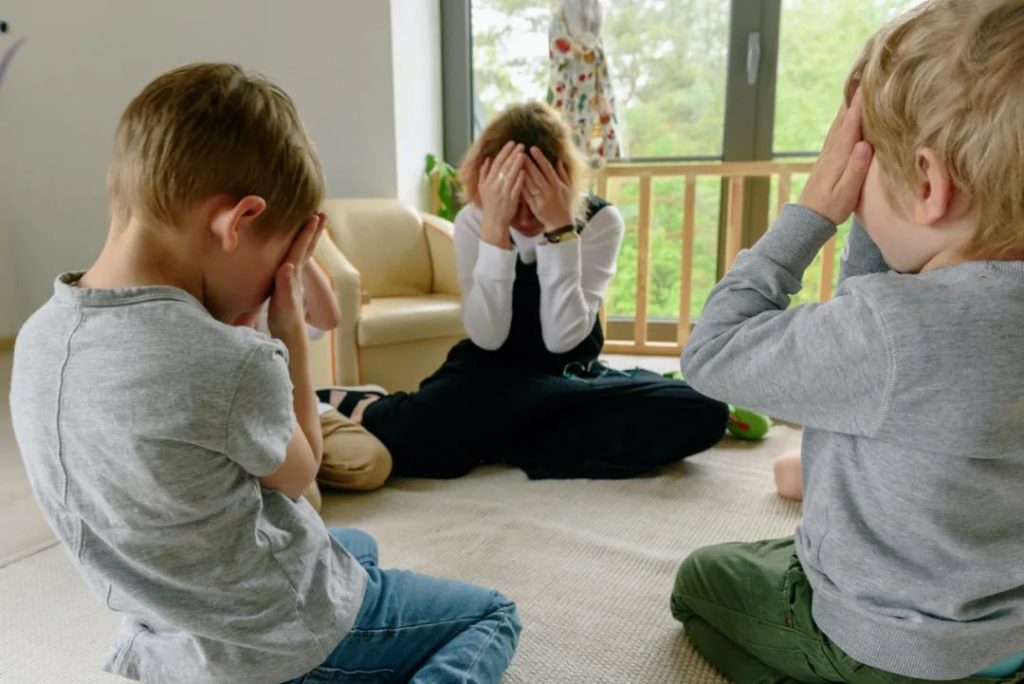
“In the past, people always blamed industrial production and traffic vehicles for environmental pollution. In fact, some data show that industrial pollution accounts for 41%, while indoor pollution is as high as 59%.”
The average person spends only 8% of their time outdoors, usually no more than two hours, and spends most of their time indoors. The severity of indoor pollution has been underestimated by us!

AIR
Indoor pollution is worse than outdoor pollution
Compared with adults, children are more vulnerable to indoor air pollution, and the harm caused to the body should be paid attention to!
Investigations by relevant preventive medicine departments have concluded that the high incidence of respiratory diseases in autumn and winter is related to indoor air quality. Asthma can be induced by air pollution. Influenza, tuberculosis and other diseases transmitted by droplets are related to poor indoor ventilation and pollution. Indoor air pollution will especially affect children and pregnant women and fetuses.
No.1
Affect the health of infants and children
Indoor air pollution is more of a concern than outdoor air pollution.
Long-term inhalation of formaldehyde and other pollutants in children can cause rhinitis, cough, asthma, dyspnea and other tracheal and lung diseases, and it is easy to cause children’s immunity to decline, skin allergies, redness, and gastrointestinal disorders.
In addition, it is not uncommon to report that newborns or young children are infected with leukemia due to house decoration. Although it is impossible to directly prove the direct connection between the two, indoor pollution still poses a great health hazard to children’s growth. Long-term inhalation of formaldehyde and PM2.5 can significantly increase the in cidence of childhood asthma and allergic cough.
Indoor pollution also affects children’s height and mental health. Children’s bodies are in the critical period of growth and development. Long-term inhalation of air contaminated with smoke, harmful gases, bacteria and viruses is not only easy to induce respiratory diseases, but also may cause chronic effects on children’s body functions, which in turn affects normal height and intelligence development.
No.2
Affect the health of pregnant women and fetuses
Pregnancy is a process of fetal development, accompanied by massive proliferation of cells, formation and development of organs. Moreover, the fetus has a limited metabolic capacity and is highly susceptible to pollutants. In addition, during pregnancy, women are often limited in outdoor activities, further increasing the degree of harm from indoor air pollutants.

AIR
Three main sources of indoor pollution, beware!
No.1 Formaldehyde
A survey in the United States shows that 65% of children with different degrees of asthma are caused by decoration pollution. Among the volatile compounds emitted by decoration materials, formaldehyde is the most harmful to human health. Formaldehyde mainly comes from the glue in composite wood building materials. Not only new homes, but even many years after renovation, formaldehyde may still be released.
No.2 Benzene
Unlike formaldehyde, benzene, a pollutant that also comes from decoration materials, is very volatile. Generally, after a new house is decorated, benzene will volatilize quickly instead of being released slowly and for a long time like formaldehyde.
Benzenes are often used in large quantities as organic solvents and adhesives, which can induce leukemia and aplastic anemia. Long-term exposure can cause neurasthenia and affect the female reproductive system.
No.3 PM2.5
In addition to the pollution caused by decoration materials, some indoor pollution is artificially brought, such as indoor smoking, which can cause the PM2.5 value to increase by 12 times.
AIR
6 ways to make your home breathe

① Home decoration should be environmentally friendly: the decoration should be simple, even if it uses environmentally friendly materials.
② The smell of smoke does not enter the door: After smoking outside, you must change your clothes, wash your face and rinse your mouth when you come home. Smoke particles, including some carcinogenic compounds, remain on clothing, furniture and skin for a long time after smoking. Contact with children may affect their health, especially children with fragile immune systems.
③ Don’t bring pathogens: When you go out and go home, especially from crowded places, such as hospitals and railway stations, the first thing is to do cleaning to reduce the chance of bringing pathogens to children.
④ Indoors are often ventilated: In autumn and winter, people tend to close doors and windows due to windy winds and low temperatures in autumn and winter, resulting in a large accumulation of pollutants. It is recommended to open windows regularly to ventilate in autumn and winter to let in fresh air.
⑤ Anti-mite must be in place: Regular mite removal is very important, and the focus is on the cleaning of bed sheets, quilt covers, and pillowcases. To remove mites, you can use bed vacuum cleaners, mite removal instruments, etc.
⑥ Always purify the air: The use of air purifiers can reduce the probability of respiratory tract infections to a certain extent, reduce harmful substances such as hair, fine dust, pm2.5, formaldehyde, bacteria in the home, and protect human health.
Comments